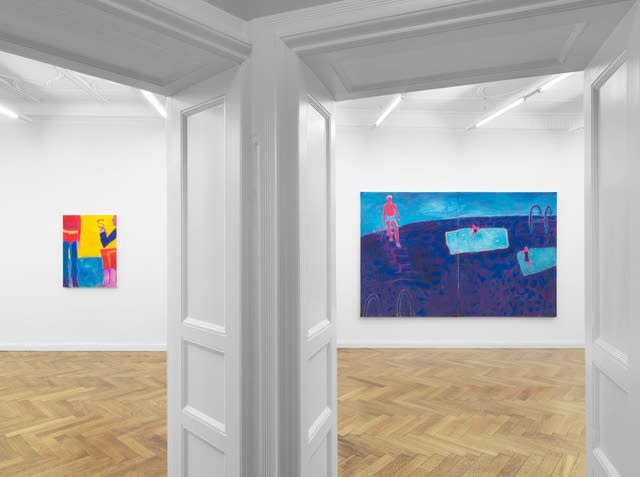Member Case Study: Haverkampf Leistenschneider
Haverkampf Leistenschneider is a commercial gallery based in Berlin. A younger organisation with a small team of three, the gallery has made both large and small changes over the past three years to reduce its carbon emissions. The gallery was part of GCC’s first wave of Active Members announced earlier this year.
After calculating its baseline carbon footprint, gallery staff found that business travel (particularly flights to art fairs), air freight of artworks to exhibitions, and building energy use were the three main sources of the gallery’s emissions.
The team then set specific targets to cover each of these areas. These included reducing flights to 50% of pre-Covid levels by 2025; making sure that the majority of international shipping is carried out by sea, rail or road by 2028; reducing building energy use by 30% before 2030; and making all packaging materials reusable or curbside recyclable by 2026.
In practice, working towards these targets has meant integrating environmental awareness into the decision-making and day-to-day running of gallery operations. The team plan ahead for exhibitions, carefully plan their attendance at international events, and engage with their suppliers and contractors.
As many galleries have also found, international travel is a particularly important–yet tricky–problem to address. The Haverkampf Leistenschneider team have dramatically re-thought their approach to travel, and have made substantial carbon savings as a result.
‘I completely changed my approach to travel,’ says Carolin Leistenschneider, partner at the gallery. ‘Within Europe, I only travel by train.’ Over the past year, this has included a night train to the Venice Biennale, and return journeys to and from Vienna, Basel and Copenhagen.
Tapping into the local community is also key. Haverkampf Leistenschneider have collaborated with other GCC members in Berlin to tackle sector-wide issues like sustainable packaging, and Leistenchneider has played a central role in setting up GCC Berlin.
Working together can strengthen the argument for new, low-carbon alternatives, but it can also help solve practical problems and lead to substantial carbon savings. In 2022, the gallery shared transport to Enter Art Fair in Copenhagen and Vienna Contemporary with other Berlin-based galleries, consolidating shipments into one and travelling together by car, or even in the van with the artworks.
Other actions have also had an impact: the gallery found a new printer that accepted lower print runs and now print a smaller number of catalogues, reprinting only when there’s demand.
In 2022 the gallery won first prize in the ‘Galleries for Future’ competition, awarded by the Berlin Senate. The award was intended to support galleries to make further investments in sustainability initiatives, and the team used the prize money to update the gallery’s lighting system.
The new system is easily controlled via an app, which makes it perfect for a smaller gallery with fewer rooms where lights can be turned off when there are no visitors. ‘On days when we don’t have so many visitors, for example, I can just switch it off with one click–it’s very elegant,’ says Leistenschneider.
Despite their successes, though, there have been challenges along the way. As such a small team, Leistenschneider is the sole Green Ambassador, and completing carbon reports can be time-consuming. But setting internal deadlines and planning ahead has given the team time to integrate carbon reporting into the everyday running of the gallery.
What advice would the team have for other smaller galleries who want to make changes?
‘The most important and first step is the carbon calculator, because it completely shows you where to start,’ says Leistenschneider. ‘If you see that flights and energy are the big points, then you have to start there. Make a report and see the diagnosis.’
Community and collaboration also go a very long way, particularly for smaller teams who might be pressed for time. ‘Network with other galleries,’ Leistenschneider says. ‘Exchanging ideas and experiences is important.’
Our Member Case Study series highlights stories from across our sector that show the climate action that’s taking place every day. We’d like to thank our featured members for generously sharing their successes, their challenges, and their plans for the future.
Are you a GCC member and want to share your story? Get in touch! We’d love to hear from you.

